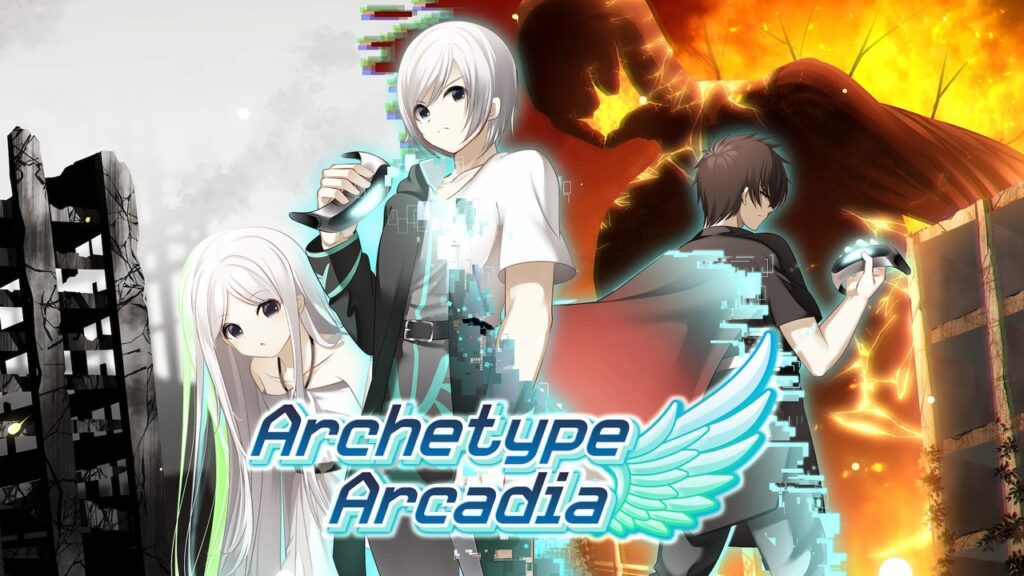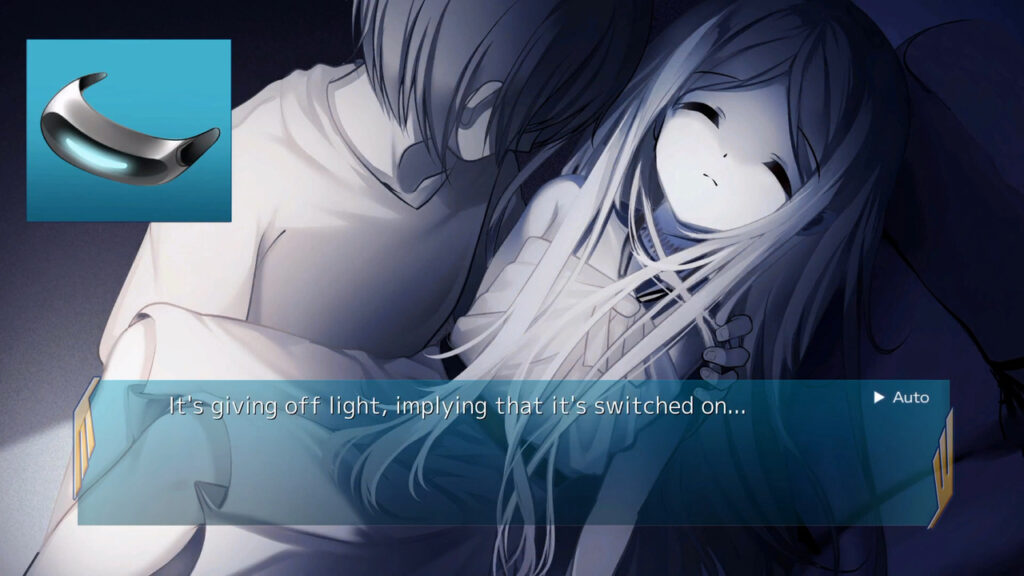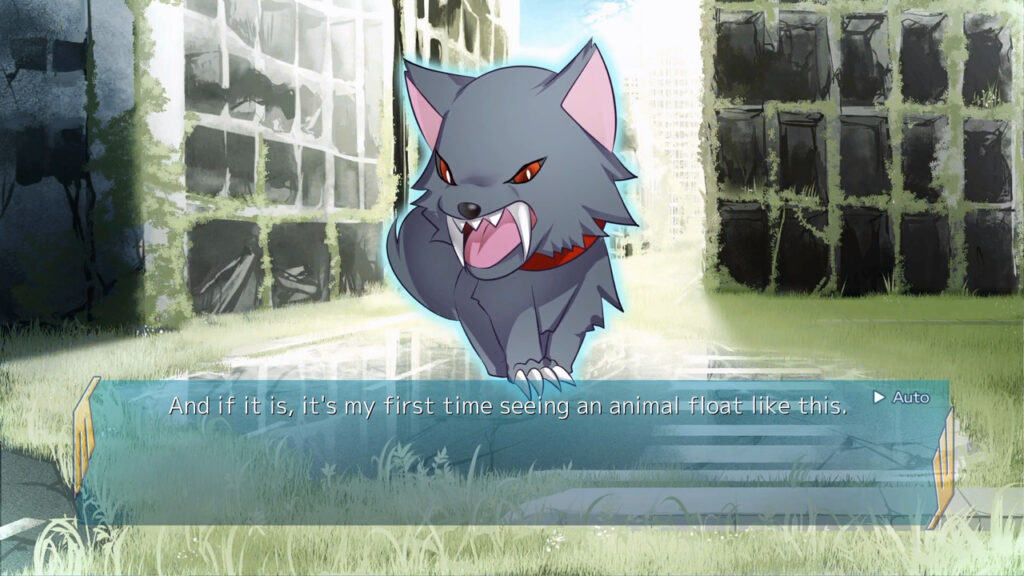
Developer: Kemco Games, Water Phoenix
Publisher: PQube
Platforms: Switch, PC, PS4, PS5
Tested on: Switch
Archetype Arcadia – Review
Two years after debuting in Japan, Kemco Games and Water Phoenix’ Archetype Arcadia has finally been localized for English-speaking audiences, courtesy of PQube. Given its sheer length and the overall complexity of the story, it definitely isn’t a surprise that it took this long for the visual novel to arrive on Western shores. If you’ve been on the lookout for a new visual novel, there is a good chance that this one might have appeared on your radar, as there has been much buzz surrounding Archetype Arcadia. But was the game worth the long wait? And is it a title that you should pick up if you’re a more casual reader?
Story
‘I am a sinner.’ Archetype Arcadia opens with those four words, and with them, it immediately sets the tone for what is to follow. Set in a post-apocalyptic world, where humanity is on the brink of extinction, Archetype Arcadia presents players with a story that feels equally epic as it feels intimate and fragile. Its overarching plot falls somewhere in the middle between The Matrix and The Walking Dead, with a disease called Peccatonia, that turns the infected rabid, running rampant. The very few unaffected seek refuge in an online game world, the titular Archetype Arcadia, that is designed to counteract the effects of the disease. Central to Archetype Arcadia (the story, not the virtual world) are a young man named Rust and his younger sister Kristin. Kristin displays early symptoms of the disease and she must frequent the online game world in order to stay healthy. One day, however, she falls unconscious. The key to waking her up seems to be in the digital realm, so Rust turns to this virtual reality to cure his sister. Teaming up with other players, Rust must defeat the bosses of the game, using avatars summoned from his memories of the real world.
If that sounds like a lot to take in, don’t worry, it’s not just you. Over a fifty-hour span, Archetype Arcadia spins an intriguing narrative that isn’t afraid to dig deep into the psyche of its principal cast. This does mean that the characters are fleshed out, but the sheer amount of information combined with the overall bleakness of the story can be a bit much at times. We can’t quite fully detail what unfolds, so as not to spoil the story, but there are moments here that feel like a gut punch as you start to care for these characters. It’s also easy to draw parallels to real-world themes like the importance of memories, substance abuse, depression, and existential crises. As a result, Archetype Arcadia isn’t going to be for everyone -especially not for the faint of heart, but it is a story that will linger with you for quite a long time. Before you get to that point, there are plenty of twists and turns too -including a particularly divisive one near the end of chapter two. Archetype Arcadia comprises eight chapters, so the defining twist hits quite early… but also very hard.
Graphics
It’s clear that Kemco Games and Water Phoenix wanted to emphasize the ‘visual’ in the term visual novel, as this is one of the best-presented outings of the genre we’ve seen so far. While the grimdark anime aesthetic feels somewhat overdone at this point, it is fitting for the tone of the story. The many combat scenes provide plenty of room for visual flair, and Archetype Arcadia surpasses the typical blend of CGs and static portraits during dialogue we’ve come to expect from the genre. The artwork is generally pleasant to look at as well, with character designs, in particular, a highlight, although the monster designs are hit-and-miss and not always tonally consistent across Archetype Arcadia’s runtime. Sometimes enemies appear like cartoonish chibi designs, and other times you’re looking at almost photorealistic renders.
Sound
There is plenty of voice acting present here, albeit only in Japanese. While this does help in conveying the emotions of the cast, emphasizing their feelings of joy and anger, this can get in the way of reading at your own pace. Music didn’t always fit the tone of the scene, which did break the atmosphere occasionally.
Gameplay
When looking at a visual novel, there often isn’t a whole lot we can say about it in terms of gameplay, but Archetype Arcadia is different in this regard. It’s a choice-driven affair, of course, but the choices actually seem to have consequences that affect later moments in the story rather than just impacting the branching path where you stand. A bad decision may come back to haunt you much later, resulting in an unavoidable death that you weren’t aware was going to happen. Archetype Arcadia offers plenty of save slots, and it’s highly recommended that you make good use of them, because of the sheer amount of bad endings present in the game. Of course, there are the obligatory “skip read text” and “back” buttons in case you happen to screw up regardless, as any self-respecting visual novel offers.
That said, it’s a bit disheartening that Kemco Games and Water Phoenix went for a visual novel to deliver their story, given that Archetype Arcadia has all the foundations laid out for a card-battling game instead. The setting of the virtual world, the summonable monsters, and the duels are all present here, and we were left wanting to actually play the Archetype Arcadia VR game instead of reading about it. This is made all the more jarring by how in-depth Archetype Arcadia goes into explaining the mechanics behind the combat system. This is probably so that readers understand what is going on at any given time, but in practice, it also serves as a way too detailed reminder of what could have been. Clocking in at 2.6 million words, which translates to around fifty hours for a single playthrough (with more if you want to see every ending), there is plenty of content here to justify the €29.99 asking price already, so this kind of content could have easily been shortened, as to keep up the pacing of the overarching story. It’s definitely not the only part of Archetype Arcadia that could have benefited from being trimmed down, although it is the most egregious one. If anything, Archetype Arcadia undermines itself by overstaying its welcome. It’s a fantastic story, but it’s also too long for its own good.
Conclusion
There is a fantastic story here, with an amazing cast of characters, waiting to be discovered, provided you are willing to invest a significant chunk of your time in Archetype Arcadia. The visual novel’s biggest flaw is that it tends to lose itself in fleshing out details that don’t matter to the overall story. In fact, this gives us the impression that Kemco Games and Water Phoenix wanted to make a completely different game. Adding to this, Archetype Arcadia can overwhelm you by dumping a ton of information at once, making it less accessible for casual readers. Still, it is one of the more haunting and gripping visual novels out there, if you’re willing to take it on.









No Comments